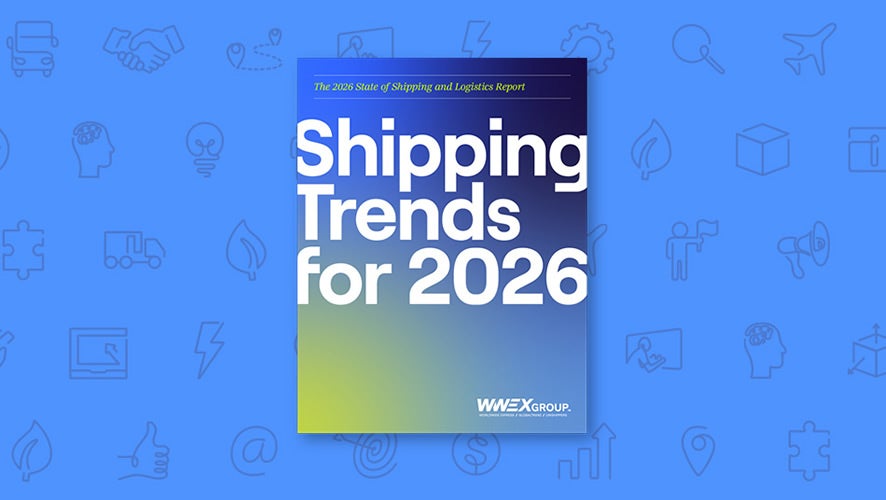BLOG POST
Small Parcel Shipping: 10 Ways for SMBs to Cut Costs

Reading Time: 3 minutes
When things move fast, it's sometimes hard to stop, reflect and make adjustments. But, these are the precise times when shippers must ask themselves, "What are we doing to keep up?" Take parcel shipping transportation costs, for example. Rates and fees continue to climb, making it more important than ever for businesses to look for efficiencies.
Fortunately, shippers can find cost-saving adjustments all around their operations. These changes can help offset rate hikes, the rising necessity for two-day delivery, increased residential deliveries or other market shifts that burden shippers. Here, we uncover opportunities big and small to lower costs and refine your small package shipping strategy.
Parcel shipping processes and packaging
Consider these tips to make sure you're achieving the lowest possible costs from packaging to delivery:
1. Parcel packaging - Learning how to package a parcel the right way is the first step to cutting back parcel shipping costs. Going too big with a box could increase your costs. With parcel shipping, carriers use the greater of either the actual weight or dimensional weight (DIM) - which is the physical space a package occupies relative to its actual weight. By reducing an box's footprint on the truck, you're in a position for the lowest possible rate.
2. Free materials - Did you know that UPS® offers free packaging materials? Envelopes, boxes and tubes are free for express services, while blank labels and label pouches are available for ground services. Every bit counts!
3. Accurate information - Reduce fees by making sure you have the correct address, number of pieces, special delivery needs and contact information at the delivery location. Also, always determine if it's a residential or commercial destination.
4. Shipping labels - UPS charges a $10 fee for handwritten shipping labels. Complete labels from a terminal and print them whenever possible. A transportation management system (TMS) could be a big benefit here as you can save customer information for faster data input.
Shipping solutions and transportation services
Making little changes in how you choose to ship packages can make a big difference. Here are some examples:
5. Shipping zones - Often, a shipper will expedite a parcel when a ground service would have delivered in the same timeframe. But how can a shipper know? Carriers have shipping zones, which dictate the transit time from package pickup to delivery. By studying these zones, you can calculate if a package will meet your customer's needs with a standard ground or expedited shipping solution.
6. Shipping options - Offering a range of delivery options helps lower costs for you and your customers. For example, UPS offers UPS SurePost®, an economical shipping option for small non-rush packages under 10 pounds.
7. Drop boxes - Instead of paying for a scheduled pick up from your carrier, a quick trip to a drop box will eliminate the cost. These boxes are available 24/7 and take packages for any shipping service.
8. Package bundling - Consolidating separate shipments headed to the same address into a single load will result in a lower shipping rate per pound than shipping the items separately. This may take additional planning on your part. For example, if the packages come from separate departments, you'll need to coordinate shipping dates and details with the departments. You will also need to find a single contact who can receive and separate the packages after delivery.
Read more about UPS Hundredweight Service made for multiple-package parcel shipments.
Bigger supply chain changes for consideration
Big challenges call for big changes. These concepts require more buy-in from the business, but can bring greater changes to your shipping costs and operations:
9. Expanded distribution network - The standards for shipping timeframes shrink by the day while costs for rapid delivery rise. Instead of swallowing the costs, many businesses are moving closer to customers by opening a second or third warehouse. Expanding the distribution network lowers shipping costs drastically while making two-day or next-day delivery feasible - making your business more competitive in otherwise unreachable markets. Check out these five signs it's time to partner with a 3PL.
10. Supplier proximity - Similar to opening a warehouse closer to customers, some businesses put manufacturing and assembly sites closer to suppliers or ports where materials become more accessible at lower costs. This helps with inbound shipping costs and gives you more agility for sourcing materials. If these locations happen to be closer to customers too, all the better!
Get a parcel shipping consultation
There are plenty of cost-saving shipping solutions out there, but sometimes it can be hard to know all your options. Worldwide Express is a third-party logistics (3PL) company that helps shippers find the best shipping options, manage shipments and build more efficient shipping operations. If you need fresh ideas, we want to be the hands lifting your shipping operations to new levels of success. Let us know how we can help!

